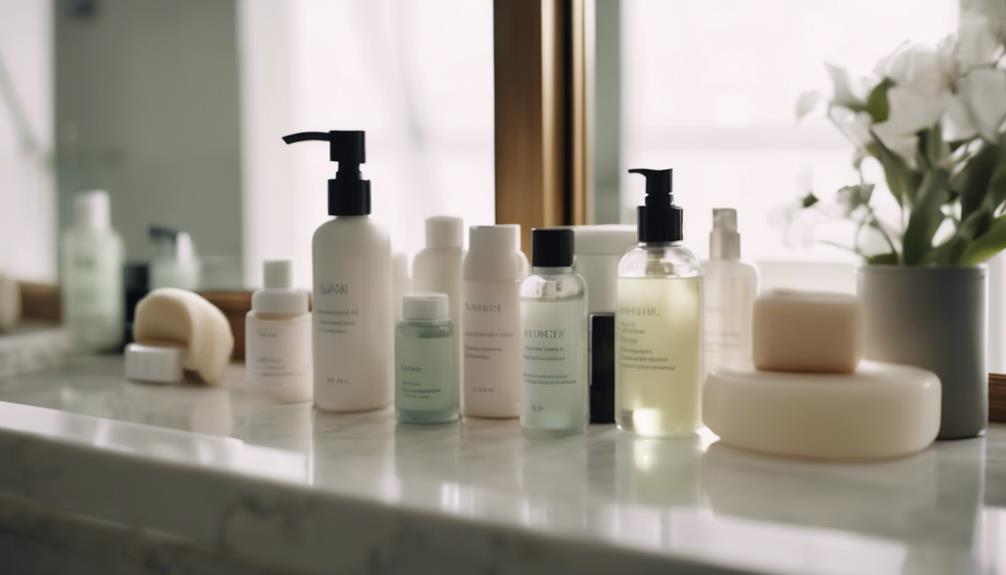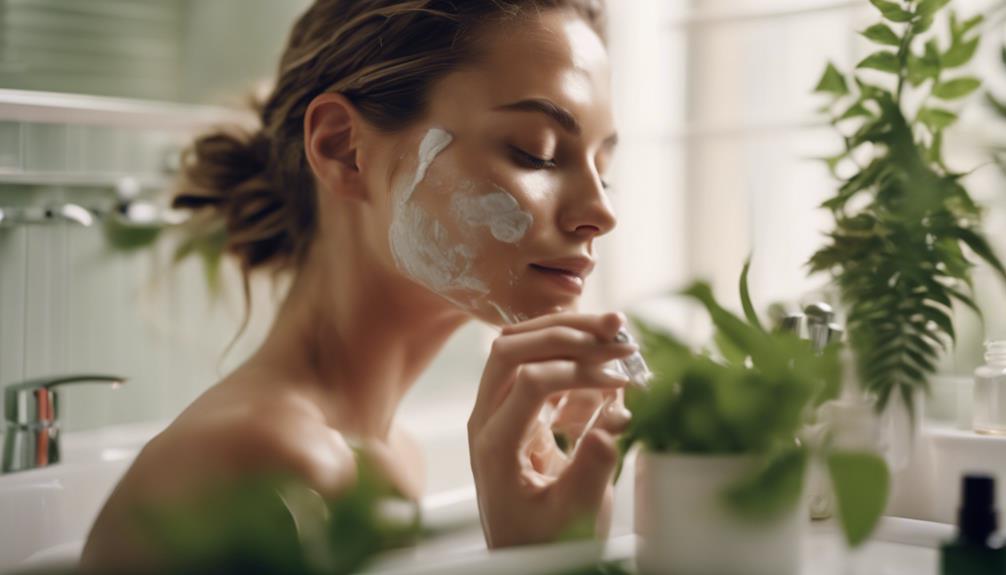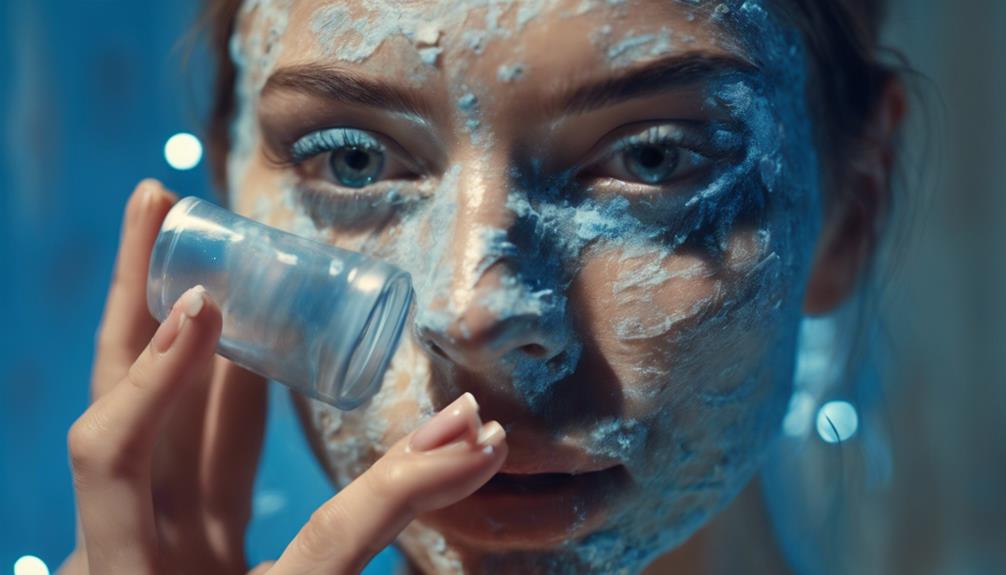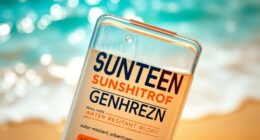Skin cancer impacts 1 in 5 Americans and awareness is vital. You might think darker skin is immune, but that's a myth; anyone can develop melanoma. Risk factors include lighter skin tones, blistering sunburns, and family history. Regular check-ups and self-exams can help catch potential issues early, greatly boosting survival rates for melanoma. Daily sunscreen application, wearing protective clothing, and avoiding tanning beds are essential for prevention. Remember, even on cloudy days, UV rays can cause damage. If you're curious about more prevention tips and treatment options, you won't want to miss what's ahead.
Key Takeaways
- Skin cancer affects 1 in 5 Americans, with early detection leading to a 94% survival rate for melanoma.
- Individuals with darker skin can develop melanoma, often resulting in later diagnoses and higher mortality rates.
- Daily sunscreen use, regardless of weather, is crucial for protecting against harmful UV rays that contribute to skin cancer.
- The ABCDE rule helps identify suspicious moles: Asymmetry, Border irregularity, Color variation, Diameter > 6mm, and Evolution.
Prevalence of Skin Cancer
Skin cancer is alarmingly prevalent, affecting about 1 in 5 Americans during their lifetime. Each day, around 10,000 new diagnoses occur in the U.S., which underscores the significant risk you face. While non-melanoma skin cancers are more common, melanoma cases have seen a notable increase, raising public health concerns. Understanding the prevalence of these cancers is essential in identifying risk factors, especially if you spend time outdoors.
Cumulative UV exposure is a major contributor to developing skin cancer. Even brief sun exposures can accumulate over time, leading to serious skin damage. It's important to recognize that early detection plays a pivotal role in improving survival rates. For melanoma, early treatment can yield a remarkable 94% 5-year survival rate. By being proactive about skin checks and monitoring changes, you can catch potential issues before they escalate.
Awareness of skin cancer's prevalence can help you make informed decisions about sun protection and regular skin assessments, ultimately reducing your risk. Prioritizing your skin health today can lead to a safer tomorrow. Don't underestimate the importance of staying vigilant against skin cancer.
Common Myths About Skin Cancer

Many people hold misconceptions about skin cancer that can jeopardize their health and safety.
One common myth is that individuals with darker skin are immune to skin cancer. In reality, they can develop melanoma and often face higher mortality rates due to later diagnoses.
Another misconception is that sunscreen isn't necessary on cloudy days; however, UV rays penetrate clouds, making it essential to apply sunscreen year-round.
Many also believe that only older adults get skin cancer, but melanoma is the most common cancer type among young adults aged 25-29.
You might think a base tan provides protection against sunburn, but any tan indicates skin damage and fails to offer adequate protection from UV rays.
Risk Factors by Skin Type

Individuals with lighter skin tones face a notably higher risk of developing skin cancer due to their lower melanin levels, which provide less natural protection against harmful UV radiation. If you have blond or red hair and light eyes, you should be especially vigilant. A history of sunburns, particularly blistering ones from childhood, greatly raises your risk as well.
While individuals with darker skin generally have a lower risk for skin cancer, they often receive late diagnoses, leading to higher mortality rates. This is because melanomas can develop in less exposed areas, making them harder to detect.
It's essential to evaluate other risk factors like the number of moles you have and your family history of skin cancer. These elements can elevate your susceptibility, regardless of your skin type. Additionally, age plays a vital role; older individuals often face increased risks due to cumulative UV exposure and skin changes over time.
To stay proactive, schedule regular skin checks to monitor any changes in your skin. Being aware of these risk factors can help you take necessary precautions against skin cancer.
Understanding Melanoma

When it comes to identifying melanoma, knowing the signs is essential for early detection.
You should be aware of the risk factors that increase your chances of developing this serious skin cancer.
Let's explore effective identification techniques and the key risk factors to keep in mind.
Melanoma Identification Techniques
To effectively identify melanoma, you can use the ABCDE rule, which highlights key characteristics to watch for in suspicious moles. This rule stands for Asymmetry, Border irregularity, Color variation, Diameter greater than 6mm, and Evolution over time.
If you notice a mole that doesn't match these criteria, it might be time for a skin check.
Melanoma often presents as a dark or multicolored spot, frequently exhibiting an irregular shape or uneven borders. Early detection is essential, as it can greatly increase survival rates—nearly 100% five-year survival rate when caught early.
Remember, melanoma can develop in non-traditional areas for individuals with skin of color, like the palms, soles, and under nails, so it's important to monitor these regions as well.
Regularly checking your skin for any changes in existing moles or the emergence of new ones is critical. Utilizing these identification techniques can help you spot potential issues early, leading to better outcomes.
Stay vigilant and proactive about your skin health; it could make all the difference.
Risk Factors Overview
Understanding the risk factors for melanoma is key to recognizing how lifestyle choices, genetic predispositions, and skin type can influence your likelihood of developing this serious skin cancer.
Here's a quick overview of critical risk factors:
| Risk Factor | Description |
|---|---|
| Early Sun Exposure | Blistering sunburns in youth lead to cumulative UV damage. |
| Skin Type | Individuals with lighter skin tones are at greater risk. |
| Family History | A family history of skin cancer increases your risk. |
| ABCDE Rule | Use this guideline to identify potential melanoma: |
| A: Asymmetry, B: Border irregularity, C: Color variation, | |
| D: Diameter > 6mm, E: Evolving characteristics. |
Melanoma is increasingly common among young adults, particularly those aged 15-29. If you have numerous moles or a family history of skin cancer, be vigilant. Dark-skinned individuals may develop melanoma in atypical areas and often face delayed diagnosis, contributing to higher mortality rates. Stay informed and proactive about your skin health!
Treatment Options Available

Exploring the various treatment options for skin cancer is essential, as they vary greatly based on the cancer type, size, and location.
For non-melanoma skin cancers like basal cell carcinoma and squamous cell carcinoma, surgical excision is commonly used. You might also encounter Mohs micrographic surgery, which offers precise removal of cancerous tissue while preserving healthy skin. Cryotherapy is another option, where extreme cold is used to destroy abnormal cells, often ideal for superficial cancers.
If you're dealing with early-stage melanoma, surgical removal is usually the go-to method, boasting a high success rate when caught early. However, advanced cases may require more aggressive strategies like immunotherapy or targeted therapy. It's important to remember that treatment effectiveness varies based on your overall health, age, and specific cancer characteristics, making personalized treatment plans essential.
Don't forget the importance of regular follow-ups after your treatment. These appointments help monitor for any signs of recurrence or new skin cancers, ensuring ongoing care and peace of mind. Your proactive approach in managing your health can greatly impact your recovery and long-term well-being.
Importance of Sun Safety

You need to prioritize sun safety every day, no matter the weather.
Applying sunscreen daily, recognizing any changes in your skin, and understanding UV exposure can greatly reduce your risk of skin cancer.
Daily Sunscreen Application
Daily sunscreen application is essential for shielding your skin from harmful UV rays, helping to prevent skin cancer regardless of the weather. Even on cloudy days or during winter, those harmful UV rays can penetrate through the clouds, making it critical to use broad-spectrum sunscreen with at least SPF 30 every day.
To guarantee effective protection against skin damage, apply about one ounce of sunscreen for full-body coverage, and don't forget to reapply it every two hours, or more often if you're swimming or sweating. This consistent reapplication is fundamental for maintaining your skin's defense against UV radiation.
In addition to daily sunscreen application, practicing sun safety is equally important. Seek shade during peak hours, typically between 10 a.m. and 4 p.m., and consider wearing protective clothing like hats and long sleeves.
These measures work hand-in-hand with sunscreen to enhance your skin's protection and overall health. Remember, taking these steps now can greatly reduce your risk of skin cancer in the future. Prioritize your skin's safety, and make daily sunscreen application a non-negotiable part of your routine.
Recognizing Skin Changes
Recognizing changes in your skin is vital for catching potential signs of skin cancer early, making regular self-exams and professional screenings essential components of your sun safety routine.
By performing monthly self-exams, you can identify skin changes that might indicate trouble. Use the ABCDE rule: look for Asymmetry, Border irregularity, Color variation, Diameter greater than 6mm, and Evolving characteristics in moles or new spots.
Awareness is key; skin cancer can develop in less sun-exposed areas, especially in individuals with darker skin. This vigilance should accompany protective measures against UV exposure, such as applying broad-spectrum sunscreen with at least SPF 30, wearing protective clothing, and seeking shade during peak sun hours.
Annual dermatologic screenings are also important for early detection, as professionals can spot changes you might miss. Don't underestimate the impact of even brief UV exposure—every little bit adds up.
Understanding UV Exposure
Understanding UV exposure is essential for effective sun safety, as both UVA and UVB rays greatly increase the risk of skin cancer through cumulative skin damage. UV radiation is a significant risk factor, and even on cloudy days, up to 80% of UV rays can still reach you. Consequently, you should adopt consistent sun protection practices year-round.
To help you grasp the importance of sun safety, here's a quick reference table:
| Factor | Description | Recommendation |
|---|---|---|
| UV Radiation | Causes skin damage and cancer risk | Use broad-spectrum sunscreen |
| Peak Sun Hours | 10 a.m. to 4 p.m. | Seek shade during these times |
| Sun Protection Factor | SPF 30 or higher for effective defense | Reapply every 2 hours |
| Indoor Tanning | Increases risk of skin cancer | Avoid completely |
| Cumulative Exposure | Long-term sun exposure adds up | Practice daily sun safety habits |
Prevention Strategies for Everyone

Protecting your skin from harmful UV rays is essential, and adopting effective prevention strategies can greatly lower your risk of skin cancer.
Start by applying a broad-spectrum sunscreen with at least SPF 30 every day, regardless of the weather. UV rays can penetrate clouds and cause damage even in winter. Wearing protective clothing, such as wide-brimmed hats and UV-blocking sunglasses, further reduces your exposure.
It's vital to avoid tanning beds, as they emit harmful UV radiation that notably increases your skin cancer risk. Instead, seek shade during peak sun hours, typically from 10 a.m. to 4 p.m. While vitamin D is important, you can maintain adequate levels through a balanced diet rich in vitamin D foods rather than excessive sun exposure.
Regular self-exams of your skin using the ABCDE rule can aid in early detection of skin cancer. Look for asymmetry, border irregularity, color variation, diameter greater than 6mm, and evolving characteristics.
Frequently Asked Questions
How Worried Should I Be About Skin Cancer?
You should be aware of skin cancer risks, as it's common. Regular skin checks and sun safety practices can reduce your chances. Staying informed and proactive helps you manage your risk effectively and confidently.
What Are the Important Facts About Skin Cancer?
You might think skin cancer isn't a big deal, but it's actually the most common cancer in the U.S. Knowing the types, risk factors, and detection methods can save lives and promote early intervention.
What Not to Do With Skin Cancer?
Don't ignore changes in your skin, like new or evolving moles. Avoid tanning beds, delay seeking medical help, relying solely on high SPF, and assuming skin cancer only affects light-skinned individuals. Stay informed and proactive.
What Is the Main Cause of Skin Cancer?
Like Icarus flying too close to the sun, you risk skin cancer when you expose your skin to excessive UV radiation. Cumulative sun exposure, especially with sunburns, greatly heightens your chances of developing this serious condition.
What skincare tips should I follow to reduce the risk of skin cancer?
Discover the skincare secrets dermatologists swear by to reduce the risk of skin cancer. Always use sunscreen with at least SPF 30, seek shade during peak sun hours, wear protective clothing, and avoid tanning beds. Regular skin checks and early detection are key, so see a dermatologist annually for a full-body exam.
Conclusion
You might think skin cancer won't affect you, especially if you tan easily or have a darker complexion, but that's a myth.
Skin cancer can impact anyone, regardless of skin type.
By understanding the risks, recognizing the signs, and practicing sun safety, you can greatly reduce your chances of developing this serious condition.
Remember, prevention is key—so take action today to protect your skin and guarantee your health for years to come.









